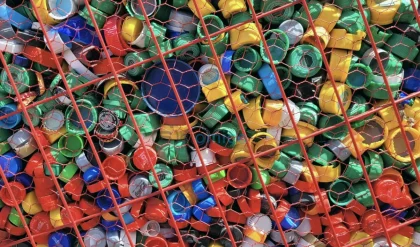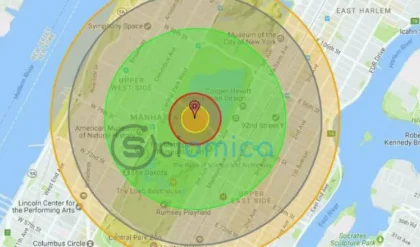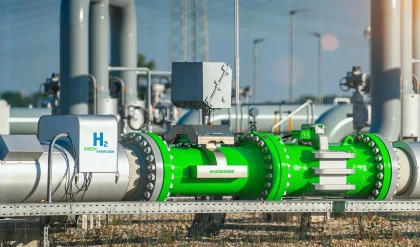
In a remarkable turn of events, researchers from the University of Colorado Boulder found themselves in a scientific investigation reminiscent of detective work as they ventured into an agricultural region of Oklahoma. With a hypothesis in hand, they utilized advanced instruments to delve into how aerosol particles form and grow in the atmosphere. However, they encountered an unexpected revelation: the first-ever airborne measurements of Medium Chain Chlorinated Paraffins (MCCPs) in the Western Hemisphere. Their findings are now published in the journal ACS Environmental Au.
Lead author Daniel Katz, a chemistry PhD student at CU Boulder, expressed his excitement over the surprising discovery. “It’s very exciting as a scientist to find something unexpected like this that we weren’t looking for,” Katz stated. The research motivates a deeper understanding of these toxic organic pollutants that pose threats to public health and the environment.
MCCPs, which are currently being considered for regulation under the Stockholm Convention—a global treaty aimed at safeguarding human health from long-lasting and widespread chemicals—have previously been detected in distant regions like Antarctica and Asia. Prior to this study, scientists lacked methods to document their presence in the atmosphere of the Western Hemisphere.
These compounds are commonly used in metalworking fluids and in the production of PVC and textiles. They often infiltrate wastewater systems, ultimately resulting in contamination of biosolid fertilizers, also known as sewage sludge. Katz and his team suspect that the MCCPs they identified might stem from such fertilizers applied to the fields near their research site in Oklahoma.
“When sewage sludges are spread across the fields, those toxic compounds could be released into the air,” Katz noted. Although the researchers couldn’t directly demonstrate this phenomenon, they believe it’s a plausible hypothesis given existing evidence that similar compounds are emitted when sewage sludge fertilizers are used.
Notably, Short Chain Chlorinated Paraffins (SCCPs), the smaller relatives of MCCPs, are already regulated under the Stockholm Convention and by the Environmental Protection Agency (EPA) in the United States since 2009. This regulation stemmed from findings that linked these pollutants to adverse human health effects due to their persistence and mobility in the atmosphere. Curiously, researchers are beginning to suspect that the regulation of SCCPs could inadvertently contribute to the proliferation of MCCPs in the environment.
“We always have these unintended consequences of regulation,” pointed out Ellie Browne, a CU Boulder chemistry professor and co-author of the study. “When you regulate something, those products often get replaced by alternatives, which can lead to other issues.”
Katz and his team employed a nitrate chemical ionization mass spectrometer, an instrument designed for identifying airborne chemical compounds. They continuously collected air samples from the agricultural site over a month, documenting isotopic patterns in the compounds. During their analysis, Katz uncovered new patterns distinct from already recognized chemicals, ultimately identifying them as chlorinated paraffins related to MCCPs.
The chemical structures of MCCPs resemble those of PFAS, commonly known as “forever chemicals,” notorious for their slow degradation rates. This parallel has raised concerns, leading the Oklahoma Senate to ban biosolid fertilizers due to the potential contamination of soils.
The research team now aims to continue their investigation on MCCPs by measuring these pollutants throughout different seasons to gain insights into how their levels fluctuate. There remains a wealth of unknowns regarding the environmental impact of MCCPs, emphasizing the necessity for further research.
“We identified them, but we still don’t fully understand their behavior in the atmosphere,” Katz remarked. He underscored the importance of ongoing scientific evaluation and proper regulation of these chemicals to safeguard public health and safety.
Reference:
- Daniel John Katz, Bri Dobson, Mitchell Alton, Harald Stark, Douglas R. Worsnop, Manjula R. Canagaratna, Eleanor C. Browne. Real-Time Measurements of Gas-Phase Medium-Chain Chlorinated Paraffins Reveal Daily Changes in Gas-Particle Partitioning Controlled by Ambient Temperature. ACS Environmental Au, 2025; DOI: 10.1021/acsenvironau.5c00038






